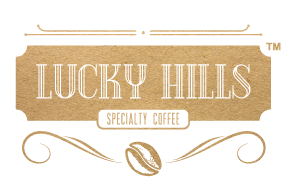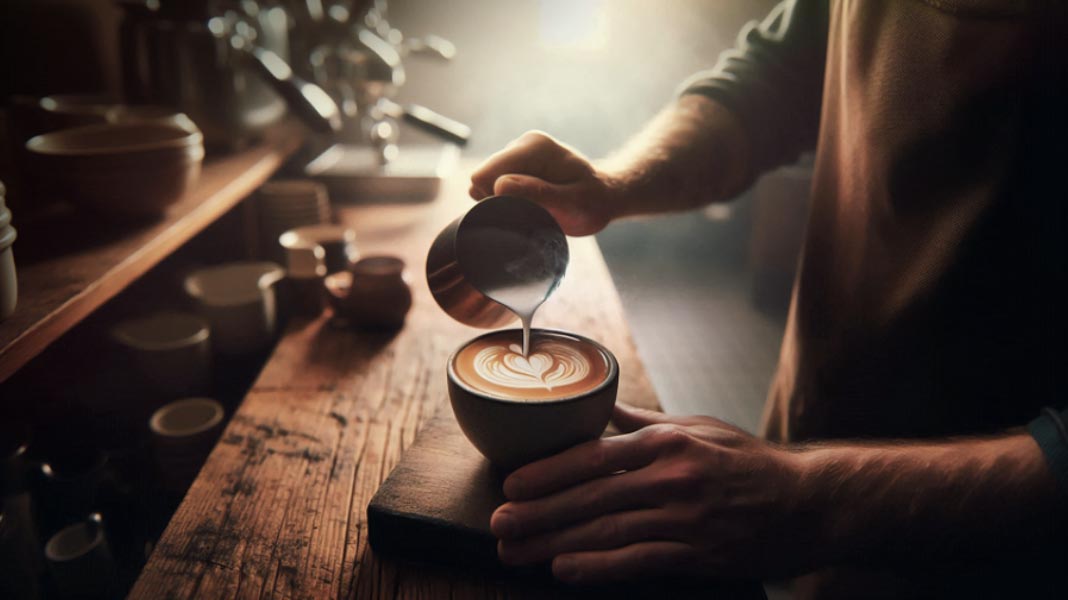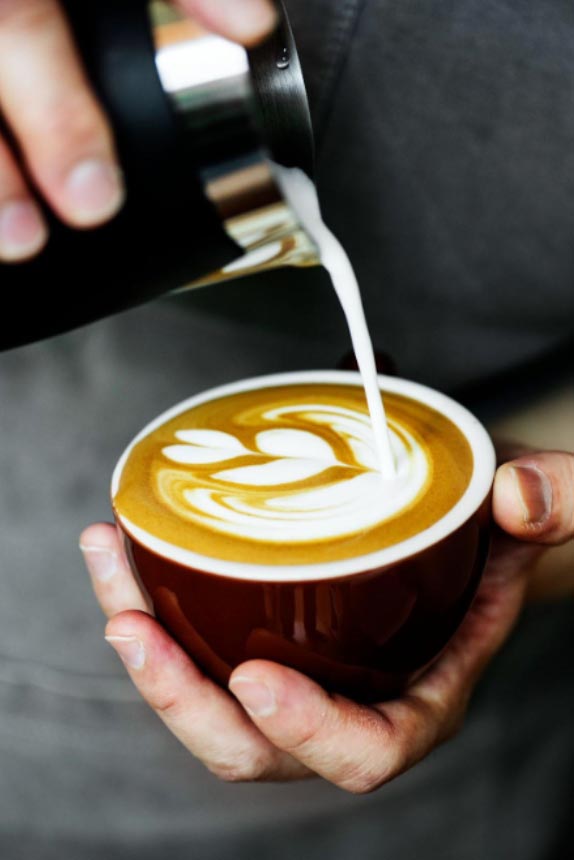Latte art is more than just an aesthetic trend in coffee shops—it’s a fascinating blend of creativity, skill, and science. As more coffee enthusiasts adopt this visual art form, latte art has become a key element that transforms an ordinary cup of coffee into an extraordinary experience.
For instance, according to a recent study, latte art can even influence sensory perception, increasing the coffee’s sweetness and acidity, as shown by participants’ brainwave data. This demonstrates that coffee art goes beyond appearance, directly impacting the consumer’s experience.
With this in mind, this article explores the world of coffee with latte art and how anyone, with the right tools and knowledge, can master the art of drawing on coffee. Read on!
What Is Latte Art?
At its core, latte art is the technique of pouring steamed milk into an espresso shot in a way that creates a pattern or design on the surface of the latte. While it may appear purely decorative, the process of creating latte art also reflects the quality of both the milk foam and the espresso. It’s a delicate balance of precision and creativity, where the result depends on the milk’s texture, the espresso’s crema quality, and the barista’s skill.
Latte art adds an extra layer of sophistication to your coffee experience, making a simple latte feel more personalized and artisanal. From simple heart designs to intricate rosettas and tulips, the patterns are as varied as the baristas who create them.
Methods of Latte Art
There are two main methods for creating latte art: free pouring and etching. While both can produce beautiful results, they involve different approaches and levels of difficulty.
Free Pouring
Free pouring is the most common method used in latte art. As the name suggests, it involves pouring steamed milk directly into the espresso to create designs.
The key to mastering free pouring is controlling the milk flow and the pouring position. Typically, the milk is poured slowly and steadily, starting from a higher height to integrate the milk and espresso, and then lowering the pitcher as the design begins to take shape.
Iconic free pouring designs include hearts, tulips, and rosettas. Free pouring requires practice and precision but offers more artistic freedom, allowing you to create various designs simply by controlling the milk pitcher.
Etching
Etching is a method that allows for more detailed designs using tools like toothpicks or special latte art pens to draw on the foam. Unlike free pouring, etching does not require advanced milk-pouring skills but does demand a steady hand and a creative mind.
Baristas often use this technique to create detailed images such as animals, flowers, or even written messages on the coffee’s surface.
Etching offers more control over the final design and is perfect for adding personalized touches to your latte. However, it can take longer to execute and may not last as long as free-poured designs.
Read Also: 5 Tips to Sell Coffee and Increase Your Average Ticket
How to Make Latte Art
If you’re new to the world of latte art, don’t feel intimidated! With the right tools, techniques, practice, and high-quality specialty coffee like that from the American company Lucky Hills, you can create impressive designs in no time, with flavor and aroma that please even the most discerning palates.
Here’s a basic guide to get started with latte art:
1. Perfect Your Espresso
The foundation of any good latte art design starts with a well-pulled shot of espresso, such as those from Lucky Hills. Look for a shot with a thick, golden crema on top. The crema is essential because it acts as a canvas for the milk to rest on, making the design visible. The smoother and thicker the crema, the better the contrast with the milk, allowing your design to stand out.
- Steam the Milk to Perfection
Steaming milk correctly is the key to mastering latte art. You need to create microfoam, which is finely textured and velvety milk foam. Achieving the right texture is crucial: the milk should be smooth and shiny, with tiny bubbles.
The ideal milk temperature is around 150°F to 160°F. If it’s hotter, you risk burning the milk, ruining both its flavor and texture. To create microfoam, start by submerging the steam wand just below the milk’s surface to introduce air, then gradually lower the pitcher as the milk expands.
- Practice Pouring
Pouring is where the magic happens. Start by slightly tilting the cup and pouring the steamed milk from a higher height to integrate it with the espresso. Once the cup is about halfway full, bring the pitcher closer to the surface to start forming the pattern.
To create a heart, for example, pour the milk in a steady stream and, as the design forms, lift the pitcher to create the heart’s tip. For more complex designs like rosettas or tulips, it’s all about wrist movement and timing. Begin by pouring a base of milk, then move the pitcher in a zigzag motion to create leaf or petal layers, finishing with a quick upward motion to close the design.
- Get Creative
Once you’ve mastered the basics, don’t be afraid to get creative with your designs. Experiment with different pouring techniques or try incorporating etching for more detailed artwork.
You can also play with colors by adding edible food coloring to the milk or using different types of milk to see how they affect texture and design.
Latte art may seem challenging at first, but with practice and patience, you’ll find it’s a rewarding and fun skill to develop.
Make Latte Art with Specialty Coffee from Lucky Hills
Lucky Hills coffee beans are imported from the renowned region of Carmo da Cachoeira in Southern Minas Gerais, Brazil. Roasted on-demand in Florida, these beans ensure exceptional freshness and quality, delivering specialty coffee with unique aromas and flavors, perfect for creating latte art.
By choosing Lucky Hills, you not only provide high-quality coffee but also share the authenticity and rich history behind every cup. This provides the ideal foundation for creating impressive and memorable latte art, delighting your customers with every detail.
Visit our website or contact our consultants to purchase 100% Arabica coffee from Lucky Hills.




